Section 3
What is Section 3?
Section 3 is a provision of the Housing and Urban Development (HUD) Act of 1968 that helps foster local economic development, neighborhood economic improvement, and individual self-sufficiency. The Section 3 program requires that recipients of certain HUD financial assistance, to the greatest extent feasible, provide job training, employment, and contracting opportunities for low- or very-low income residents in connection with projects and activities in their neighborhoods.
How does Section 3 promote self- sufficiency?
Section 3 is a starting point to obtain job training, employment and contracting opportunities. From this integral foundation coupled with other resources comes the opportunity for economic advancement and self-sufficiency.
• Federal, state and local programs
• Advocacy groups
• Community and faith-based organizations
How does Section 3 promote homeownership?
Section 3 is a starting point to homeownership. Once a Section 3 resident has obtained employment or contracting opportunities they have begun the first step to self-sufficiency. Remember, “It doesn’t have to be fields of dreams”. Homeownership is achievable. For more information visit the HUD website.
Who are Section 3 residents?
Section 3 residents are:
• Public housing residents or
• Persons who live in the area where a HUD-assisted project is located and who have a household income that falls below HUD’s income limits.
Determining Income Levels
• Low income is defined as 80% or below the median income of that area.
• Very low income is defined as 50% or below the median income of that area.
What is a Section 3 business concern?
A business that:
• Is 51 percent or more owned by Section 3 residents;
• Employs Section 3 residents for at least 30 percent of its full-time, permanent staff; or
• Provides evidence of a commitment to subcontract to Section 3 business concerns, 25 percent or more of the dollar amount of the awarded contract.
What programs are covered?
Section 3 applies to HUD-funded Public and Indian Housing assistance for development, operating, and modernization expenditures. Section 3 also applies to certain HUD-funded Housing and Community Development projects that complete housing rehabilitation, housing construction, and other public construction.
What types of economic opportunities are available under Section 3?
• Job training
• Employment
• Contracts
Any employment resulting from these expenditures, including administration, management, clerical support, and construction, is subject to compliance with Section 3.
Examples of Opportunities include:
• Accounting
• Architecture
• Appliance repair
• Bookkeeping
• Bricklaying
• Carpentry
• Carpet Installation
• Catering
• Cement/Masonry
• Computer/Information
• Demolition
• Drywall
• Electrical
• Elevator Construction
• Engineering
• Fencing
• Florists
• Heating
• Iron Works
• Janitorial
• Landscaping
• Machine Operation
• Manufacturing
• Marketing
• Painting
• Payroll Photography
• Plastering
• Plumbing
• Printing Purchasing
• Research
• Surveying
• Tile setting
• Transportation
• Word processing
Who will award the economic opportunities?
Recipients of HUD financial assistance will award the economic opportunities. They and their contractors and subcontractors are required to provide, to the greatest extent feasible, economic opportunities consistent with existing Federal, State, and local laws and regulations.
Who receives priority under Section 3?
For training and employment:
• Persons in public and assisted housing
• Persons in the area where the HUD financial assistance is spent
• Participants in HUD Youthbuild programs
• Homeless persons
For contracting:
• Businesses that meet the definition of a Section 3 business concern
How can businesses find Section 3 residents to work for them?
Businesses can recruit Section 3 residents in public housing developments and in the neighborhoods where the HUD assistance is being spent. Effective ways of informing residents about available training and job opportunities are:
• Contacting resident organizations, local community development and employment agencies
• Distributing flyers
• Posting signs
• Placing ads in local newspapers
Are recipients, contractors, and subcontractors required to provide longterm employment opportunities, not simply seasonal or temporary employment?
Recipients are required, to the greatest extent feasible, to provide all types of employment opportunities to low and very low-income persons, including permanent employment and long-term jobs. Recipients and contractors are encouraged to have Section 3 residents make up at least 30 percent of their permanent, full-time staff. A Section 3 resident who has been employed for 3 years may no longer be counted towards meeting the 30 percent requirement. This encourages recipients to continue hiring Section 3 residents when employment opportunities are available.
What if it appears an entity is not complying with Section 3?
There is a complaint process. Section 3 residents, businesses, or a representative for either may file a complaint if it seems a recipient is violating Section 3 requirements are being on a HUD-funded project.
Will HUD require compliance?
Yes. HUD monitors the performance of contractors, reviews annual reports from recipients, and investigates complaints. HUD also examines employment and contract records for evidence that recipients are training and employing Section 3
residents and awarding contracts to Section 3 businesses.
How can Section 3 residents or Section 3 business concerns allege Section 3 violations?
You can file a written complaint with your local HUD Field Office.
A written complaint should contain:
• Name and address of the person filing the complaint
• Name and address of subject of complaint (HUD recipient, contractor or subcontractor)
• Description of acts or omissions in alleged violation of Section 3
• Statement of corrective action sought i.e. training, employment or contracts
MHC Contacts
Jackie Cobbins
Housing Rehabilitation Officer
601.718.4635
HUD Contact
Staci Gilliam
205-745-4311
